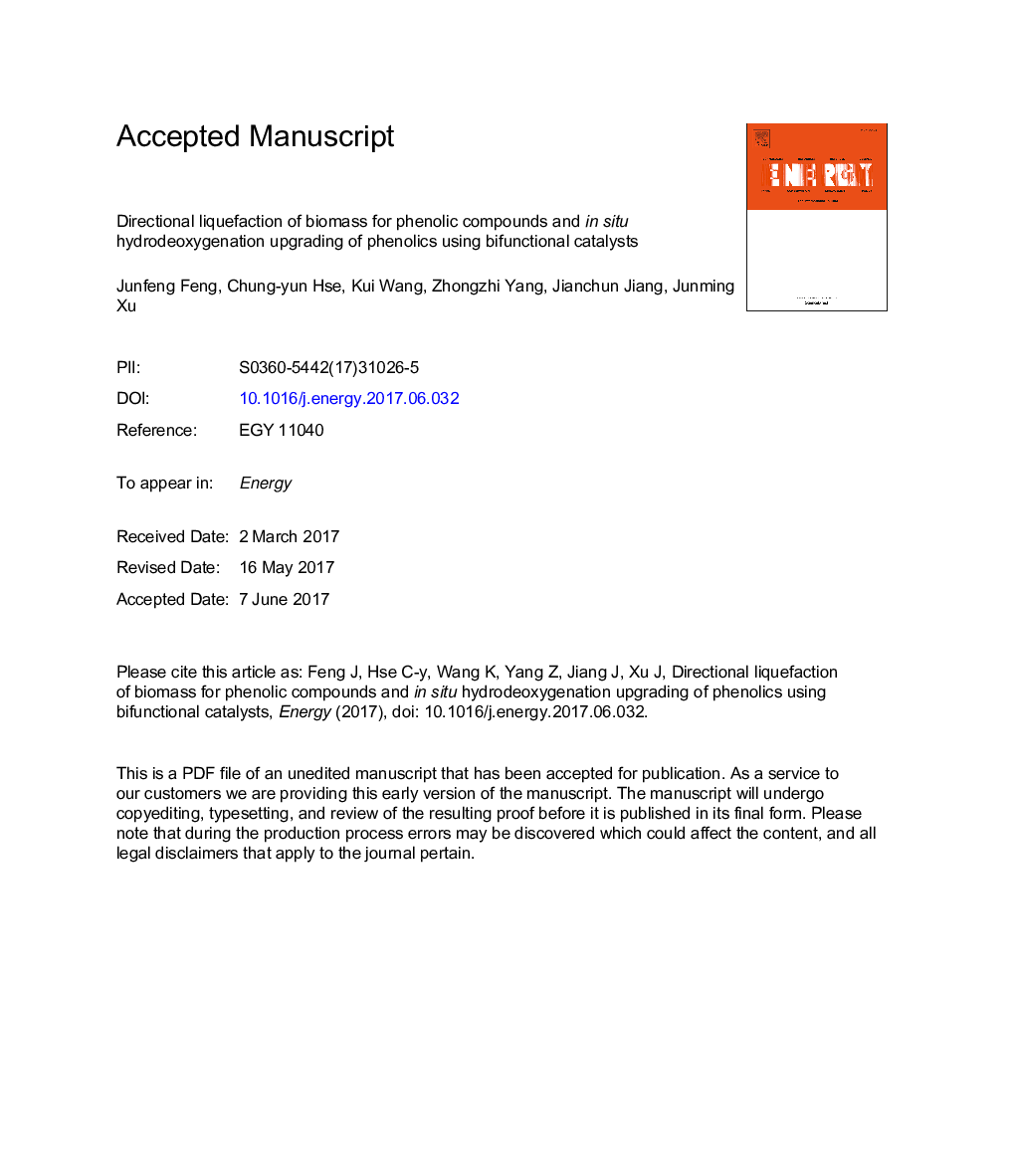| Article ID | Journal | Published Year | Pages | File Type |
|---|---|---|---|---|
| 5476373 | Energy | 2017 | 43 Pages |
Abstract
Phenolic compounds derived from biomass are important feedstocks for the sustainable production of hydrocarbon biofuels. Hydrodeoxygenation is an effective process to remove oxygen-containing functionalities in phenolic compounds. This paper reported a simple method for producing hydrocarbons by liquefying biomass and upgrading liquefied products. Three phenolic compounds fractions (1#, 2#, and 3#) were separated from liquefied biomass with stepwise precipitation and extraction. Based on HSQC NMR analysis, three phenolic compounds fractions were mainly comprised of aromatic and phenolic derivatives. Three phenolic compounds fractions were hydrogenated and deoxygenated to cyclohexanes using bifunctional catalysts via in situ hydrodeoxygenation. During the in situ hydrodeoxygenation, we introduced bifunctional catalysts combined of Raney Ni with HZSM-5. The bifunctional catalysts showed high selectivity for removing oxygen-containing groups in biomass-derived phenolic compounds. And the hydrogen was supplied by aqueous phase reforming of methanol without external H2. Additionally, the mechanism based on our investigation of in situ hydrodeoxygenation of phenolic compounds was proposed. During the in situ hydrodeoxygenation, the metal-catalyzed hydrogenation and acid-catalyzed hydrolysis/dehydration were supposed to couple together. Current results demonstrated that in situ hydrodeoxygenation using bifunctional catalysts is a promising and efficient route for converting biomass-derived phenolic compounds into fuel additives and liquid hydrocarbon biofuels.
Related Topics
Physical Sciences and Engineering
Energy
Energy (General)
Authors
Junfeng Feng, Chung-yun Hse, Kui Wang, Zhongzhi Yang, Jianchun Jiang, Junming Xu,
